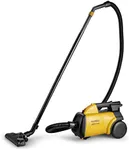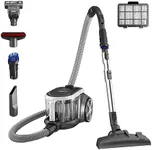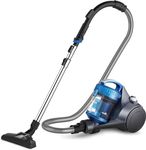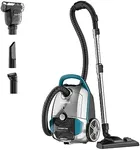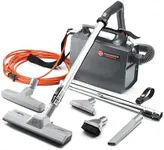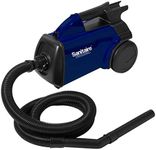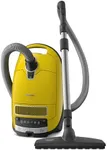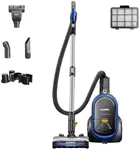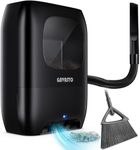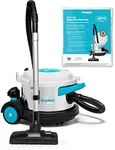Buying Guide for the Best Canister Vacuum Cleaners
Choosing the right canister vacuum cleaner can make a significant difference in maintaining a clean and healthy home. Canister vacuums are known for their versatility, powerful suction, and ease of use, making them a popular choice for many households. When selecting a canister vacuum cleaner, it's important to consider various specifications to ensure you get the best fit for your cleaning needs. Here are some key specs to look out for and how to navigate them.Suction PowerSuction power is a measure of how effectively the vacuum can pick up dirt and debris. This is important because higher suction power means better cleaning performance, especially on carpets and rugs. Suction power is often measured in watts or air watts. For light cleaning tasks or hard floors, a lower suction power (around 200-300 air watts) may suffice. For homes with pets, carpets, or heavy dirt, look for higher suction power (above 300 air watts). Consider your cleaning needs and the types of surfaces in your home to determine the right suction power for you.
Filtration SystemThe filtration system in a vacuum cleaner determines how well it can trap dust, allergens, and other particles. This is crucial for maintaining indoor air quality, especially for allergy sufferers. HEPA (High-Efficiency Particulate Air) filters are the gold standard, capturing 99.97% of particles as small as 0.3 microns. If you have allergies or asthma, opt for a vacuum with a HEPA filter. For general use, a standard filter may be sufficient, but ensure it is easy to clean or replace.
Bagged vs. BaglessCanister vacuums come in both bagged and bagless models. Bagged vacuums use disposable bags to collect dirt, which can be more hygienic and better for allergy sufferers as they trap dust and allergens. However, you will need to purchase replacement bags. Bagless vacuums use a dustbin that you empty, which can be more convenient and cost-effective in the long run. Consider your preference for maintenance and convenience when choosing between bagged and bagless models.
Weight and ManeuverabilityThe weight and maneuverability of a canister vacuum affect how easy it is to use, especially if you have a multi-story home or need to carry it up and down stairs. Lighter models (under 10 pounds) are easier to carry and maneuver, while heavier models (over 15 pounds) may offer more stability and power. Consider your physical capabilities and the layout of your home when selecting the weight and maneuverability of your vacuum.
Attachments and AccessoriesAttachments and accessories enhance the versatility of your vacuum cleaner, allowing you to clean different surfaces and hard-to-reach areas. Common attachments include crevice tools, dusting brushes, and upholstery tools. If you have pets, look for a vacuum with a pet hair attachment. For homes with a mix of flooring types, consider models with adjustable floor heads or motorized brushes. Think about the specific cleaning tasks you need to perform and choose a vacuum with the appropriate attachments.
Noise LevelThe noise level of a vacuum cleaner can impact your comfort while cleaning. Noise levels are measured in decibels (dB), with lower numbers indicating quieter operation. Vacuums with noise levels below 60 dB are considered very quiet, while those above 70 dB can be quite loud. If you are sensitive to noise or have young children or pets, opt for a quieter model. Consider where and when you will be using the vacuum to determine the acceptable noise level for your needs.
Cord Length and ReachThe cord length and reach of a vacuum cleaner determine how far you can move around without needing to switch power outlets. A longer cord (over 25 feet) provides more flexibility and convenience, especially in larger homes. Some models also come with retractable cords for easy storage. Additionally, consider the length of the hose and wand, as this affects your ability to clean high or hard-to-reach areas. Think about the size of your home and the areas you need to clean when choosing the cord length and reach.
